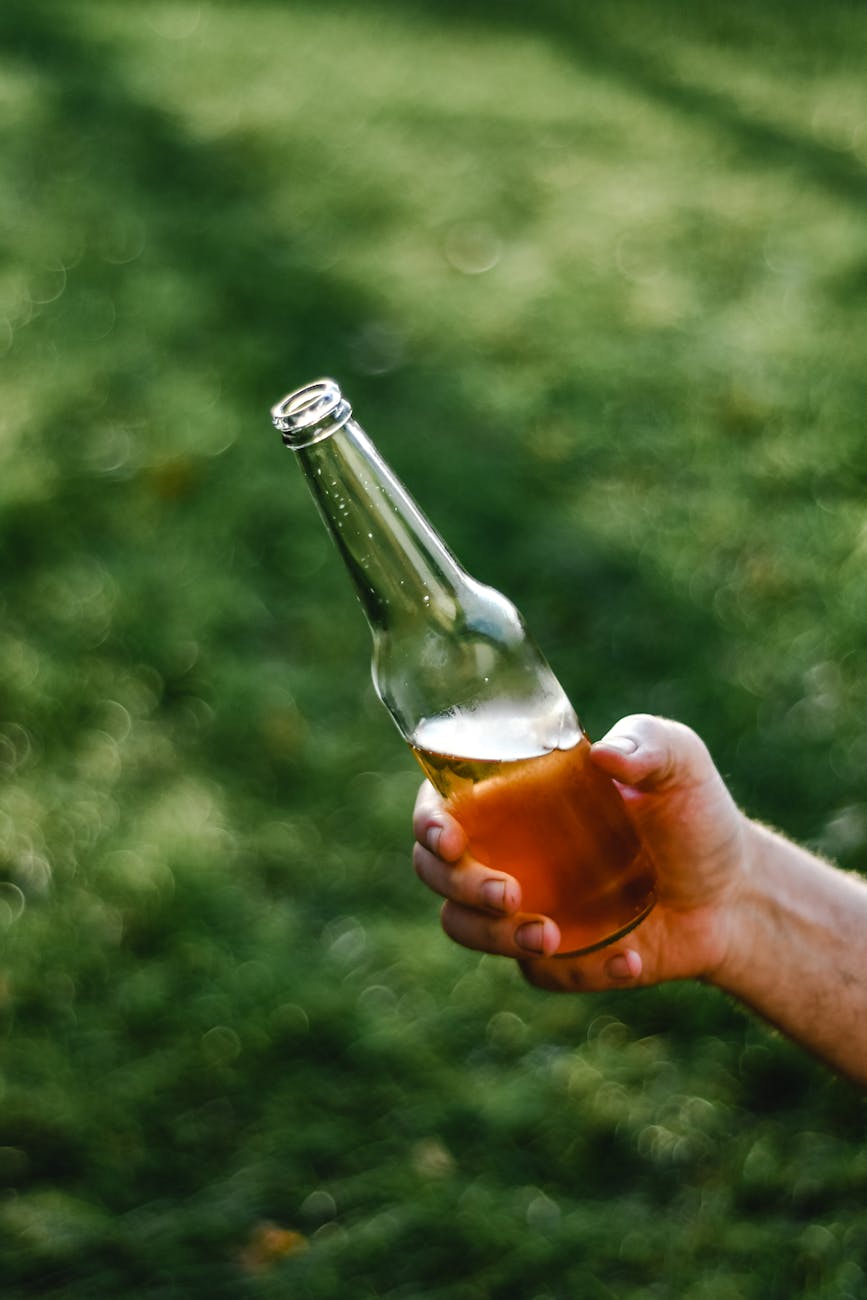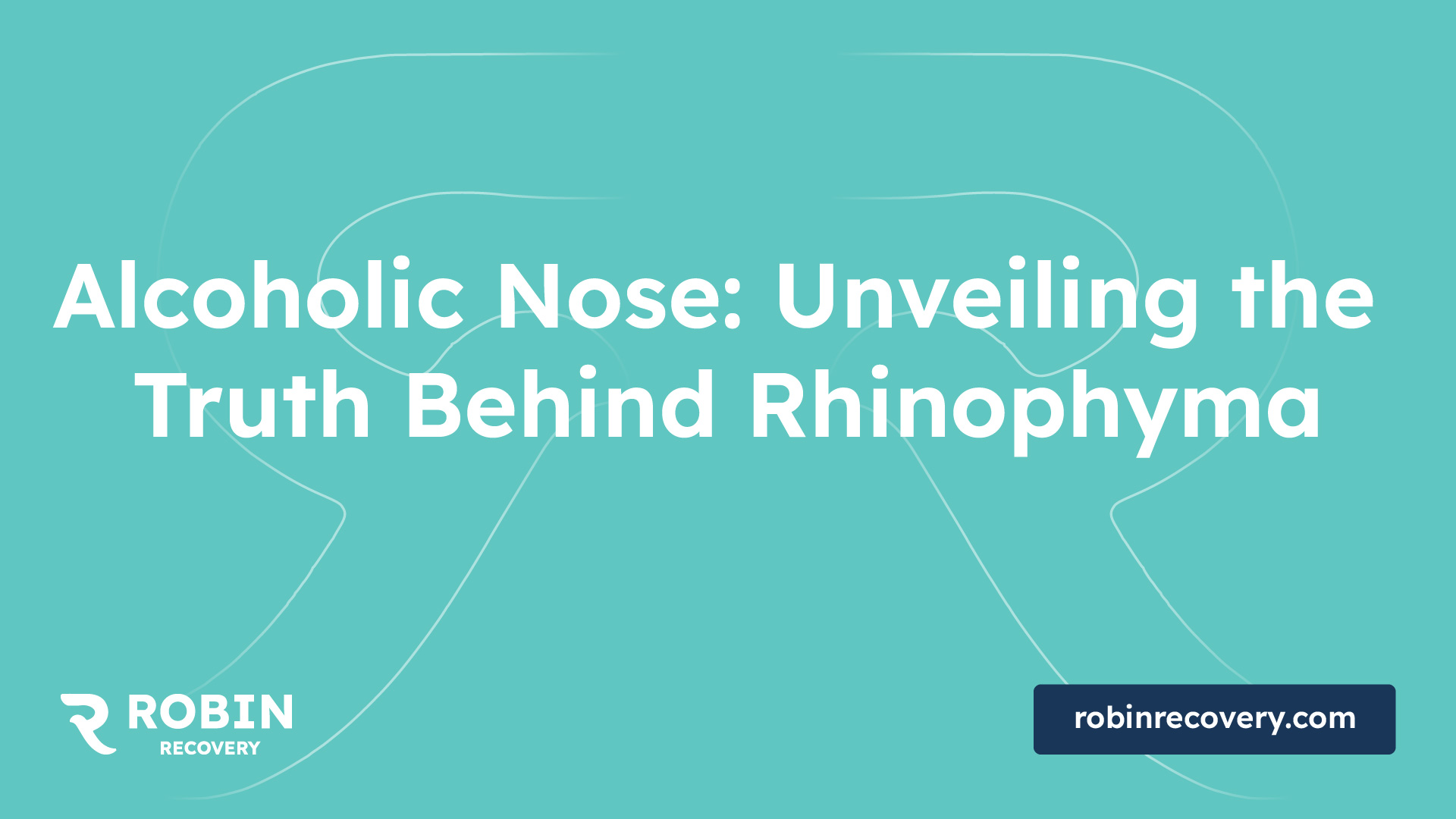Alcoholic Nose: Unveiling the Truth Behind Rhinophyma

Understanding Rhinophyma
Debunking the Alcoholic Nose Myth
The term "alcoholic nose" is often associated with rhinophyma, but this label is misleading. Historically, rhinophyma has been connected to chronic alcohol use, at times referred to as “whisky nose” or “rum blossom.” However, research indicates no direct correlation between alcohol consumption and the development of this condition. While alcohol and caffeine can temporarily dilate blood vessels, potentially worsening the appearance of rhinophyma, they are not causative factors of the condition.
Rhinophyma is classified as a subtype of rosacea, marked by thickened skin and changes primarily around the nose. It represents an advanced stage of acne rosacea and is more accurately characterized by symptoms like telangiectasias, sebaceous hyperplasia, and erythematous changes in the nasal area. The name rhinophyma derives from the Greek words for nose ('rhis') and growth ('phyma'), reflecting the condition's nature.
Studies suggest that rhinophyma is most frequently seen in white males, particularly those over 50, with a hypothesis that androgenic hormones may play a role in its onset [3]. Overall, while the myth persists, a thorough understanding reveals that rhinophyma is not directly caused by heavy drinking.

Demographics and Characteristics
Rhinophyma predominantly affects white males between the ages of 40 and 60. This condition is notably more common among men of English or Irish descent [3]. The characteristics of rhinophyma are distinctive and include:
CharacteristicDescriptionSkin ThickeningThickened skin primarily around the nose.Sebaceous HyperplasiaEnlarged sebaceous (oil) glands contributing to a bumpy appearance.TelangiectasiasVisible small blood vessels on the skin surface.Erythematous HypertrophyReddening and swelling of the nasal area.
Rhinophyma can also affect other facial regions, including the forehead, ears, chin, and eyelids [4]. Understanding the demographics and characteristics of rhinophyma is crucial for accurate diagnosis and management.
Treatment Options for Rhinophyma
The treatment of rhinophyma, also known as alcoholic nose, primarily focuses on surgical intervention, although there are various topical treatments and modern techniques available. Here we explore these options comprehensively.
Topical Treatments and Medications
Topical treatments are often used as adjunct therapies for managing the symptoms of rhinophyma rather than as standalone solutions. These may include:
While topical treatments can aid in mild cases or as preventive strategies, they do not address the structural changes in the nose associated with more advanced rhinophyma.
Surgical Interventions
Surgery remains the primary treatment for rhinophyma, especially in moderate to severe cases. Various surgical techniques have been identified:
Surgical TechniqueDescriptionDermabrasionGently sands the skin's surface to remove thickened tissue.CO2 Laser ShavingUses laser technology to precisely remove excess tissue.CryosurgeryFreezes and destroys abnormal tissue, promoting healing.Harmonic ScalpelUses ultrasound technology for precise cutting with minimal bleeding.YAG LaserUtilizes a specific type of laser for efficient tissue removal.
These procedures vary based on the severity of the condition, and additional surgeries may be necessary for reconstruction due to extensive damage [5].
Modern Treatment Techniques
The evolution of treatment for rhinophyma has seen advancements in the techniques employed. Modern approaches often focus on reducing recovery time and minimizing scarring. Some notable developments include:
Surgery is the most common treatment for rhinophyma, with skilled cosmetic or plastic surgeons performing the procedures. For a deeper understanding of the repercussions of untreated rhinophyma and its long-term effects, reference articles on anger is a d word and the acronym halt.
Causes and Risk Factors
Understanding the causes and risk factors associated with rhinophyma is essential for clarifying its relationship with alcohol use and other underlying conditions.
Link to Rosacea
Rhinophyma is primarily linked to rosacea, a chronic skin condition that causes facial redness, swelling, and visible blood vessels. Rhinophyma itself is considered an advanced stage of rosacea, where untreated symptoms lead to thickening of the skin on the nose, resulting in a bulbous appearance. This condition manifests visually through redness and uneven texture on the nasal area and is generally considered a serious complication of rosacea.
FeatureDescriptionConditionRhinophymaAssociated ConditionRosaceaSymptomsRedness, bumpy texture, enlarged nasal tip
Hormonal and Genetic Influences
Hormonal factors may also play a significant role in the development of rhinophyma. Genetic predisposition to rosacea, which may exacerbate skin conditions over time, can be a contributing influence. Some individuals may have a hereditary tendency to develop rosacea, making them susceptible to rhinophyma regardless of alcohol consumption. While there is no definitive marker for rhinophyma linked to genetics, family history can indicate a higher risk.
Other Potential Triggers
In addition to hormonal and genetic influences, other triggers may exacerbate rhinophyma. These can include:
Although rhinophyma is commonly misattributed to heavy drinking, it is crucial to recognize that it is a skin disorder resulting from chronic rosacea rather than simply a consequence of alcohol use [3]. The public perception linking rhinophyma to social habits can create emotional stress for those affected, emphasizing the need for understanding and awareness of the condition beyond its colloquial name, "alcoholic nose."
For more information on misconceptions and societal impacts, see our article on the psychological effects of stigmas associated with addiction such as anger is a d word.
Symptoms and Progression
Understanding the symptoms and progression of rhinophyma is vital for recognizing the condition and seeking appropriate treatment. This skin disorder has distinct signs that evolve over time, primarily impacting the nasal area.
Early Signs and Symptoms
In the initial stages, symptoms of rhinophyma can be mild. Common indicators include:
These symptoms may seem negligible but can worsen if not addressed promptly. Long-term untreated cases often lead to more pronounced issues.
Impact on Nasal Structure
As rhinophyma progresses, it significantly affects the nasal structure. The nose may become larger, rounded, bumpy, and appear bulbous at the tip. These changes can result in a more prominent nasal appearance, leading to potential self-esteem issues for the affected individual. Moreover, severe cases can cause nasal obstruction, affecting airflow, which can be both uncomfortable and concerning [6].
SymptomStage of RhinophymaReddish colorEarlySpidery veinsEarlySwelling of the noseEarlyBulbous appearanceAdvancedNasal obstructionAdvanced
Disease Progression
The progression of rhinophyma usually follows the course of more severe cases of rosacea, characterized by cyclical flare-ups that worsen without treatment. As the condition advances, symptoms can become increasingly pronounced, leading to permanent disfigurement if left untreated. Recognizing the importance of early detection and intervention can aid in managing the condition effectively and minimizing its impact on appearance and health.
For more information on management and treatment options, explore our section on treatment options for rhinophyma.
Preventive Strategies and Management
Rhinophyma, often referred to as "alcoholic nose," can have significant visual impacts as individuals may develop a red, large, bumpy, or bulbous nose. Managing this condition involves various strategies including surgical and non-surgical options, preventive measures, and long-term management approaches.
Surgical and Non-Surgical Options
For those with rhinophyma, treatment options can vary based on the severity of the condition. Initially, non-surgical options may include medications, while surgical procedures might become necessary as the disease progresses.
Treatment TypeDescriptionTopical TreatmentsMedications like ivermectin, brimonidine, and oxymetazoline can help manage symptoms. These reduce redness and may improve appearance.Oral MedicationsChronic low-dose isotretinoin and tamoxifen may be utilized to reduce sebaceous overgrowth and target fibrogenic cytokines. Further studies are needed to refine their efficacy for rhinophyma [4].Surgical InterventionsOnly in advanced stages can surgical treatments reverse deformities. Vascular-specific lasers and intense pulsed light treatment are common methods for contouring the tissue.
Once rhinophyma reaches its hypertrophic and bulbous stage, surgical intervention becomes the primary option to restore the structure of the nose.
Preventive Measures
Preventing rhinophyma might involve addressing underlying conditions like rosacea and minimizing risk factors. Strategies that can help include:
These measures can help prevent the onset or progression of rhinophyma, especially for those already diagnosed with rosacea.
Long-Term Management Approaches
Managing rhinophyma effectively often requires ongoing care and attention. Long-term strategies may include:
By employing these long-term approaches, individuals can help manage rhinophyma and reduce the likelihood of severe deformities. For further reading on related symptoms, consider referencing materials on anger and stress management as emotional wellness may play a role in skin conditions.
Rhinophyma Research Insights
Evolution of Treatment Approaches
Rhinophyma, characterized by the abnormal enlargement of the nose due to telangiectasias, sebaceous hyperplasia, and erythematous hypertrophied skin, has undergone significant changes in treatment strategies since its first description in 1845 by Hebra. Initially, surgical interventions were the primary method of addressing this condition. Over time, advancements in dermatological techniques have introduced less invasive options, emphasizing skin preservation and aesthetic outcomes.
Medication and Therapy Developments
Recent developments in the management of rhinophyma have centered on a combination of medical and procedural approaches. While specific medications targeting the symptoms of rhinophyma are limited, adjunct therapies are being explored. The treatment landscape now includes newer techniques that integrate multiple modalities for optimal results.
A modern 5-step technique incorporates:
This comprehensive approach aims to ensure safe, effective, and consistent outcomes for individuals affected by rhinophyma.
Future Research Directions
Looking ahead, research into rhinophyma will likely focus on understanding its underlying causes and connections to conditions such as rosacea. Studies may aim to identify genetic and environmental factors that contribute to its development, which could lead to targeted therapies. Additionally, the ongoing development of advanced laser technologies and minimally invasive treatments will continue to shape the future management of rhinophyma.
Continued investigation will also help clarify misconceptions surrounding rhinophyma, including the association with alcohol consumption. Informing the public about what is alcoholic nose? (rhinophyma) will be crucial to addressing stigma and ensuring affected individuals receive appropriate care and support.
References
[2]:
[3]:
[4]:
[5]:
[6]:
[7]:
